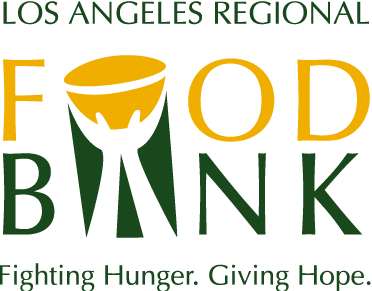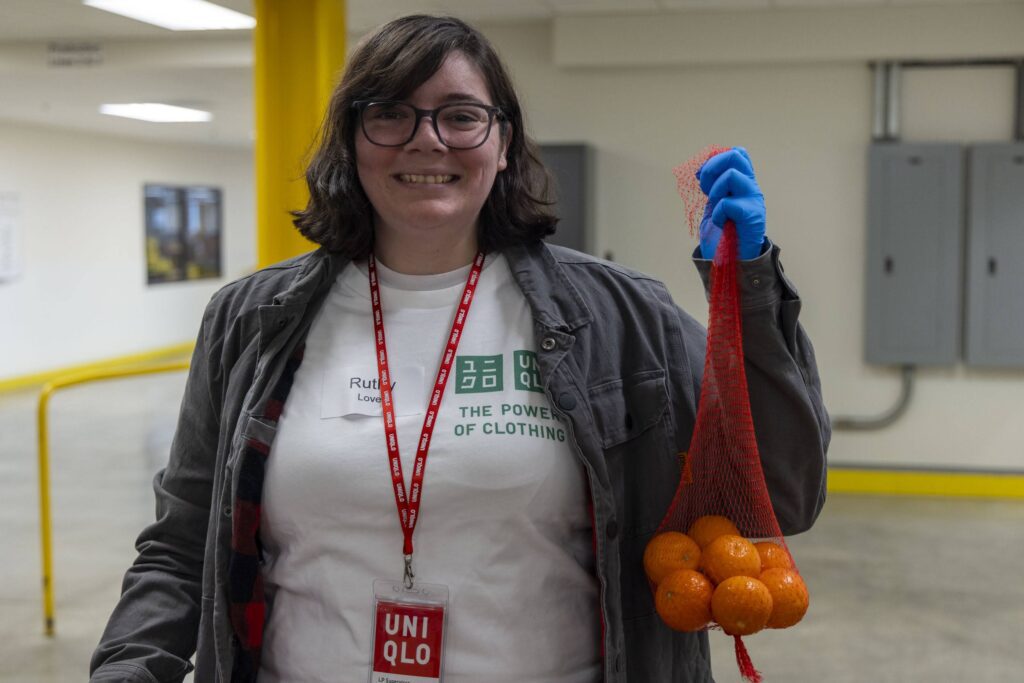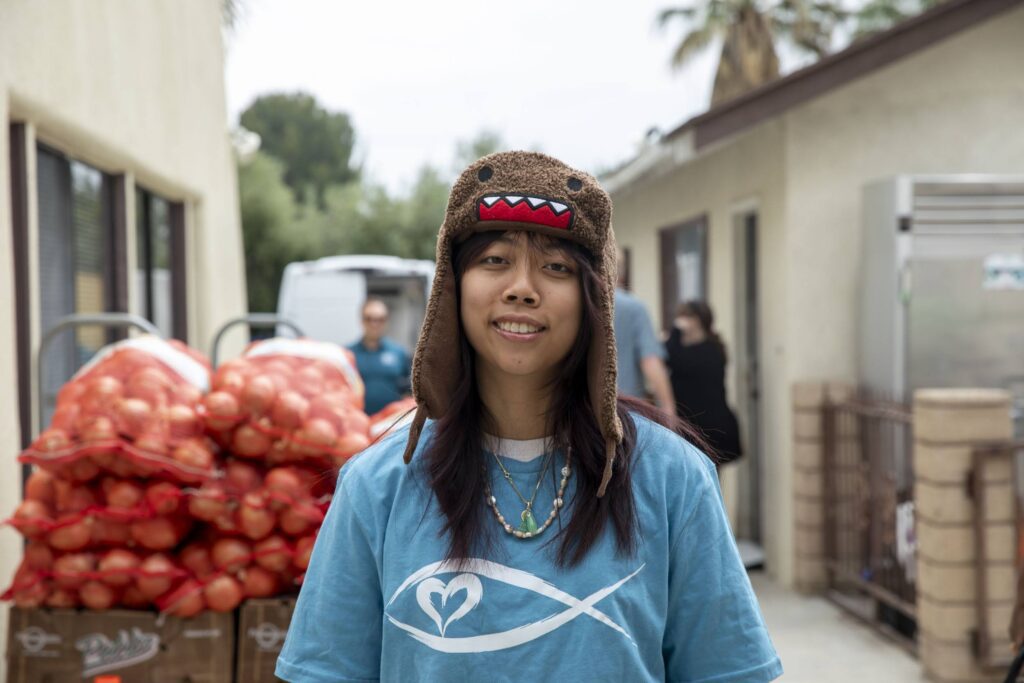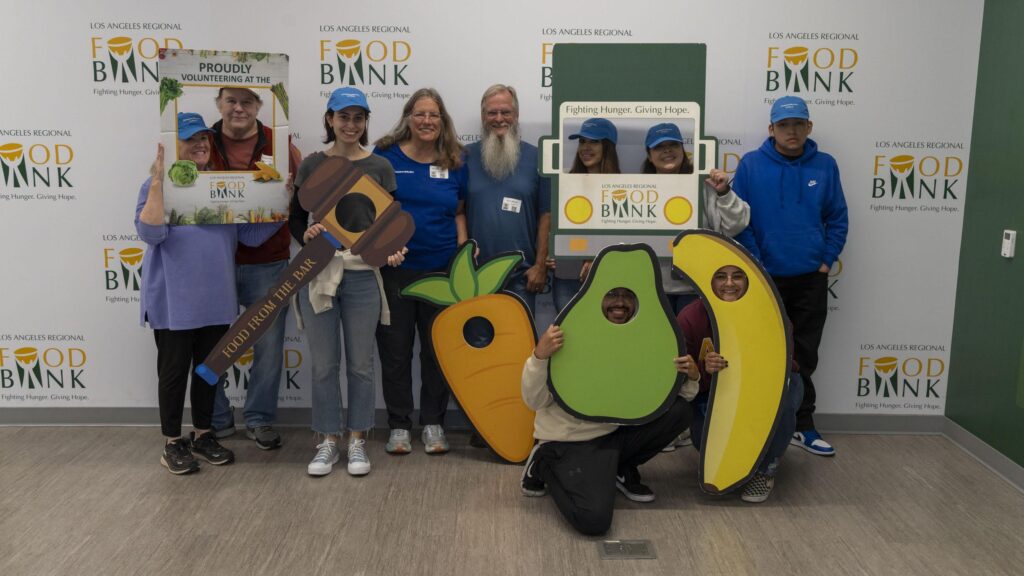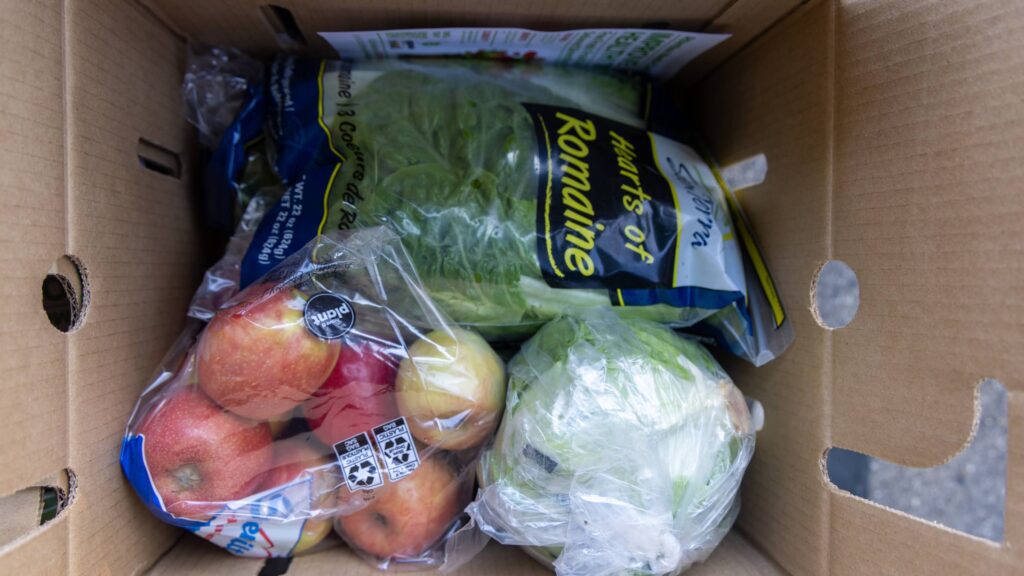Beyond Food at the Food Bank
Beyond Food at the Food Bank
The Food Bank distributes more items than just food at distributions and partner agencies.
Fifty years ago, the Los Angeles Regional Food Bank started off as a way to help the Grandview Foundation, a rehabilitation center, save money on food by collecting surplus food from growers, distributors, and wholesalers. As time passed, and its operations grew, the Food Bank noticed that individuals and families were struggling to purchase more than just food.
Related Story: Founding the Food Bank: Who Was Tony Collier?
While food assistance programs like CalFresh are essential in addressing hunger, they don’t cover non-food items. This creates a significant gap in meeting the basic needs of families who are struggling financially.
The Food Bank solicits and distributes more than just food at the distributions and at its partner agencies. As of January 2023, 97% of the items distributed at the Food Bank are food, and three percent of items distributed include non-food items. Learn more below.
Menstrual Product Program
According to a report by Harvard Health Publishing, nearly 22 million individuals who menstruate in the United States are unable to afford menstrual hygiene products. Lack of access to menstrual hygiene products can lead to a significant drop in class attendance for students, and can critically affect education, employment, health, and well-being.
In 2022 alone, the Food Bank and its partner agency network throughout Los Angeles County distributed 3.3 million menstrual hygiene products to 114,816 households.
Related Story: The LA Regional Food Bank’s Menstrual Hygiene Products Assistance Program
Individuals seeking assistance with menstrual products can visit the Food Bank’s Pantry Locator, enter their zip code, and select, ‘Period Supplies,’ to find the nearest partner agency that offers these products.
Diaper Program
According to the National Diaper Bank Network, approximately one out of every three families faces challenges when it comes to meeting their diaper requirements. Families do not have an adequate supply of diapers to ensure that their infants or children remain clean, dry, and healthy. To address this pressing issue, the Food Bank has been actively involved in distributing over 12.8 million diapers since 2019.
Related Story: The Food Bank’s Diaper Program Continues to be Essential in a Time of Need
Through the implementation of this program, more than 258,600 households in Los Angeles County have been provided with diapers. Each participating family receives approximately 50 diapers per child every month, which helps bridge the gap in meeting the average diaper needs.
Household Essentials
Throughout the pandemic through today, household items such as cleaning supplies have become essential products for individuals. Thanks to the distribution of these items, the Food Bank plays a crucial role in promoting overall hygiene and well-being to families in need. These items may range from cleaning wipes, disinfectant spray to laundry detergent.
In some cases, families who are struggling financially and have to restrict their grocery budget may choose to not purchase these basic household items, putting at risk their health and overall well-being.
It’s thanks to our supporters that the Food Bank is able to run programs that best support Los Angeles County. If you are in a position to do so, please consider donating to the Food Bank.

